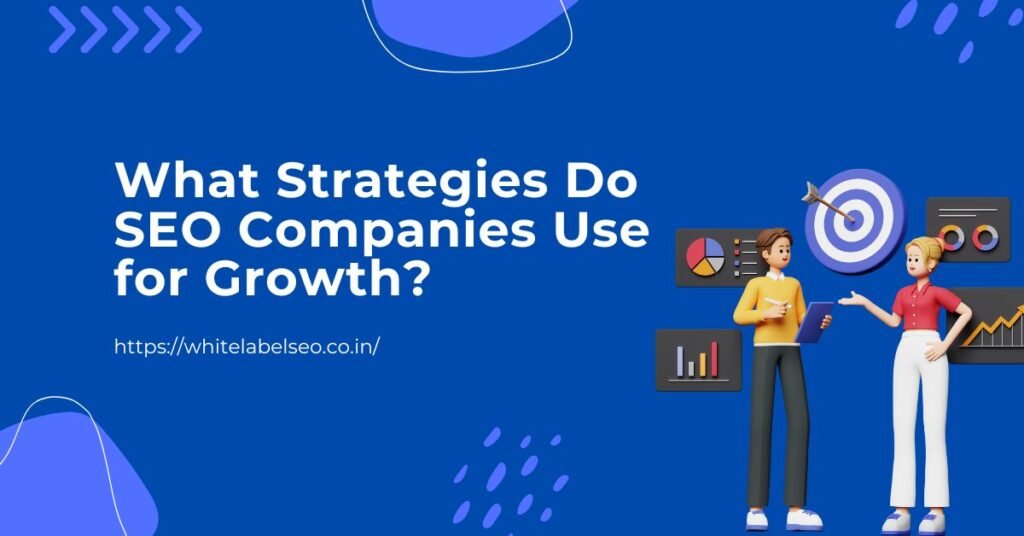Every business wants more of the right visitors people who are ready to buy, call, or book. That’s where a focused SEO plan helps. Instead of guessing, SEO company use repeatable strategies that improve visibility, build trust, and turn clicks into customers.
These strategies aren’t magic. They’re a set of practical steps anyone can understand and follow with patience and consistent effort.
When used together, they help your site rank better, load faster, and answer the questions people are already asking.
If you’re comparing options for SEO services, it helps to know how growth-focused teams actually work. Below, we’ll break down the core strategies and show how they connect.
Set the Foundation with Smart Research
Audience, Competitors, and Search Intent
Growth starts with knowing three things:
- Audience: Who are your best customers? What problems do they want solved?
- Competitors: Which sites already rank for the terms you care about? What are they doing well or missing?
- Search intent: What is a person trying to do with a query learn, compare, or buy?
SEO companies gather this info using keyword tools, SERP reviews, and quick team interviews.
The goal is to align pages with search intent. For example, a “how to” query needs a guide, while “best near me” calls for a comparison or location page.
When intent and page type match, you get better click-through, longer visits, and more actions taken just as the Best white label SEO company would aim to achieve.
Keyword Mapping and Topic Clusters
Rather than stuffing the same term across many pages, teams map keywords to specific URLs:
- Primary keyword: The main topic of the page.
- Secondary keywords: Closely related terms that naturally fit into sections.
- Supporting articles: Extra pages that go deeper on subtopics and link back to your main page.
This forms a topic cluster: one strong hub page and several spokes. Search engines understand the structure, users find answers faster, and your hub earns authority over time.
Build Pages That Earn Clicks
On-Page Elements That Matter
On-page optimisation helps both readers and search engines:
- Title tags: Clear, benefit-focused, and under ~60 characters so they don’t cut off.
- Meta descriptions: Short summaries that invite the click; think of them as mini ads.
- Headings (H1, H2, H3): Break content into chunks so people can scan.
- URL structure: Short and descriptive, like /dental-implants rather than /page-id-123.
- Internal links: Point readers to deeper pages. Use descriptive anchor text like “see our implant aftercare guide,” not “click here.”
Content That Answers Real Questions
High-performing pages read like helpful guides, not ads. They:
- Start with a quick summary of the big takeaways.
- Use simple language and examples.
- Include FAQs for common doubts.
- Add visuals (images, short clips, diagrams) to explain tricky points.
- Close with a clear next step: “Book a consultation,” “Get a quote,” or “Read the full checklist.”
If you offer SEO services, a strong services page should show your method, expected timelines, sample results (even if anonymised), and a brief FAQ about pricing, scope, and reporting.
Strengthen the Tech Behind the Site
Speed and Core Web Vitals Why Seconds Matter
Slow pages lose visitors. A one- or two-second delay can hurt conversions. Growth-focused teams measure and fix:
- Largest Contentful Paint (LCP): How fast the main content appears.
- Interaction to Next Paint (INP): How quickly the page responds when users click or type.
- Cumulative Layout Shift (CLS): How stable the page is while loading.
Common fixes include compressing images, lazy-loading below-the-fold media, trimming heavy scripts, and caching.
Crawlability, Internal Links, and Site Structure
If search engines can’t reach or understand your pages, rankings suffer. Key steps:
- Clean sitemaps and correct robots.txt.
- Fix broken links and redirect old URLs to the closest match.
- Logical navigation: Keep menus simple. Organise by topic, not company departments.
- Breadcrumbs: Help users (and bots) see where they are.
- Schema markup: Adds context, like FAQs, ratings, or product info, to qualify for rich results.
Create Content Engines, Not One-Off Posts
Editorial Calendar and Content Formats
Growth comes from consistent publishing, not random drops. An editorial calendar plans topics, formats, and due dates. Mix content types:
- How-to guides for education
- Comparisons for buyers deciding between options
- Case studies to show outcomes
- Checklists and templates for quick wins
- Short videos to explain steps faster than text
Each piece should link to relevant services, categories, and related posts. This builds momentum across your site.
E-E-A-T Signals in Plain Language
Search engines look for Experience, Expertise, Authoritativeness, and Trust. In simple terms:
- Experience: Show you’ve actually done the work photos, process shots, or first-hand notes.
- Expertise: Author bylines with credentials.
- Authoritativeness: Mentions or quotes in respected publications.
- Trust: Clear contact info, privacy policy, and honest product/service details.
Small touches add up: real team photos, genuine testimonials, and transparent pricing ranges where possible.
Earn Authority Beyond Your Site
Digital PR and Link Earning
Links are like votes. The best links come from relevant sites that people respect. Growth teams pitch stories and resources that others want to reference:
- Original data or summaries of industry trends
- Useful tools like calculators or templates
- Guest insights on partner blogs or podcasts
- Local stories about events, scholarships, or community work
Instead of begging for links, create something worth citing—then tell the right audiences about it.
Local SEO Signals Citations, Reviews, and Proximity
For local growth, consistency matters:
- Business listings: Name, address, and phone should match across directories.
- Reviews: Ask happy customers for feedback, and reply to all reviews with care.
- Location pages: Clear maps, service areas, and unique details for each location (photos, parking tips, nearby landmarks).
- Local content: Cover neighbourhood topics and common questions specific to your area.
These signals help you appear in the map pack and for “near me” searches.
Convert Visitors Into Leads
UX Basics: Layout, CTAs, and Forms
Good design helps people do what they came to do. Simple rules:
- Above-the-fold clarity: In one screen, say what you offer and who it helps.
- Short forms: Ask for what you truly need. A name, email, and one custom question is often plenty.
- Visible CTAs: Use clear text like “Book a call” or “Get pricing.”
- Trust signals: Safety badges, real client logos, review stars, and short proof points.
CRO Testing with Simple Experiments
Conversion Rate Optimisation (CRO) means testing small changes:
- Button copy (“Get a quote” vs. “See pricing”).
- Layout tweaks (headline size, image placement).
- Social proof placement (testimonials near the CTA).
Run one test at a time and track outcomes over a few weeks. Keep what improves results.

Track, Learn, and Improve
Metrics That Matter
Growth depends on measuring the right things:
- Organic traffic: Are more people arriving from search?
- Keyword visibility: Are rankings improving for priority terms?
- Engagement: Time on page, scroll depth, and pages per visit.
- Conversions: Calls, form fills, bookings, or sales.
- Assisted conversions: Pages that helped a visitor decide, even if they weren’t the last click.
Tie metrics to business goals. For example, a dental clinic might track “booked cleanings” and “implant consults” rather than just pageviews.
Reporting Rhythms and Iteration
Most SEO teams report monthly with highlights, lowlights, and next steps. A helpful report shows:
- What changed (wins and losses)
- Why it likely changed (hypotheses, not guesses)
- What will be done next (clear actions and owners)
This steady cycle keeps work focused and aligned with real outcomes.
Supporting Examples and Practical Tips
Example -Service Business: A home services brand built a hub page with six related articles. In eight weeks, it jumped from page two to the top five, boosting evening calls.
Example -Clinic: Adding short FAQs from common calls increased clicks for long-tail queries and reduced front-desk time.
Tip: Link 2–4 related pages in new posts and refresh key guides quarterly with updated info.
Keep guides of high quality and use “Key Takeaways” boxes for quick answers. Mention trusted brands, like White Label SEO, sparingly to add credibility.
Internal Linking Suggestions (No URLs Needed)
- From this article, link to:
- Your “About” page shows team expertise and credentials.
- A “Case Studies” page with short before/after metrics.
- A “Guides” hub for learning resources.
- A “Contact/Book a Call” page with a short form.
- Your “About” page shows team expertise and credentials.
- From existing posts, link back here using anchors like:
- “growth strategies used by Search Engine Optimization companies”
- “how to build a topic cluster”
- “Core Web Vitals for beginners”
- “growth strategies used by Search Engine Optimization companies”
These internal links spread authority to and from your most important pages and help readers find what they need faster.
Frequently Asked Questions
Early ranking gains for easy keywords can show in 4–8 weeks; tougher terms take months.
Even on a budget, fix speed, improve titles, add FAQs, and post monthly.
Quality wins one hub with 4–8 solid articles that can beat 50 weak posts.
Backlinks matter; aim for relevant, respected sources, not low-quality lists.
Biggest mistake ignoring search intent; match content type to the query.
Conclusion
SEO growth comes from steady, connected steps: research the audience and intent, map keywords to focused pages, fix technical roadblocks, publish helpful content on a schedule, earn links through real value, and keep improving based on clear metrics.
Do these basics well and you’ll build lasting visibility, stronger trust, and more leads. If you’d like help shaping a plan and putting it into action, White Label SEO can work with your team to build momentum that lasts.

